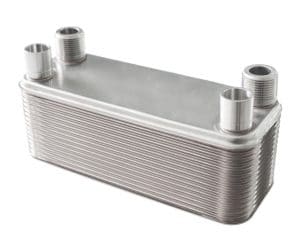 Since heat exchangers were introduced into manufacturing and other industries, companies finally have options for their various thermal management needs. Today, they have significantly more options thanks to the increasing variety of heat exchanger technologies. From ambient and below-ambient units to using varying combinations of natural/forced convection, conduction, and phase-change cooling, modern heat exchangers are designed to address virtually every consideration when it comes to advanced thermal management. That means more companies in more industries can benefit by implementing the right kind of heat exchanger for a variety of thermal management needs.
Since heat exchangers were introduced into manufacturing and other industries, companies finally have options for their various thermal management needs. Today, they have significantly more options thanks to the increasing variety of heat exchanger technologies. From ambient and below-ambient units to using varying combinations of natural/forced convection, conduction, and phase-change cooling, modern heat exchangers are designed to address virtually every consideration when it comes to advanced thermal management. That means more companies in more industries can benefit by implementing the right kind of heat exchanger for a variety of thermal management needs.
Heat Pipe Heat Exchangers
Heat pipes are a highly versatile type of heat exchanger for several reasons. They can be designed to bend, curve, and fold as needed to fit any application, and the capillary wicking material that lines them ensures optimal, uniform heat transfer throughout every pipe. Many heat pipes utilize a combination of heat transfer methods. The fluid inside of the pipe absorbs heat that is exposed to the outside surface of the pipe, and then flows through the pipes to transfer the heat safely away from sensitive equipment.
Cold Plate Heat Exchangers
Like heat pipes, cold plates make it easy for cooling fluid to absorb and transfer heat, though they do so through strategic pathways machined into each plate. Also like heat pipes, they utilize a combination of heat transfer techniques, and because the plates can be stacked together, they can handle particularly high heat loads easily and conveniently. Both heat pipes and cold plates are versatile enough to meet an impressively wide variety of applications, and choosing which heat exchanger technology is best will require custom design and analysis by a team of experts.
To learn more about the many different types of advanced heat exchanger technologies, call Noren Thermal, Inc. in Taylor, TX, at 866-936-6736.







